 |
[11] Various Pieces of Washi Paper |

Echizen washi paper is known for its many varieties. Here, you can see a thousand different pieces of Echizen washi paper that were made in this area.
Information about the various types of Echizen washi paper and artistic paper, as well as about the traditional paper makers who produced them, can be found on the panels on display throughout the museum.
|

| Hoshoshi Paper |
|
Since long ago, this has been the most popular type of washi paper, made from high-quality paper mulberry, said to be "as warm as skin and unblemished." Its practicality led to its use for announcements by court nobles, the samurai class, shrines and temples, and other officials. Outside of Echizen, hoshoshi paper was also produced in Tango, Kaga, Awa, and other areas, but the hoshoshi paper produced in the Goka area of Echizen was of such high quality that it was used by the shogun himself for written orders.
|

| Danshi Paper |
|
Danshi paper began use around the year 746, and is said to be the oldest type of paper in Japan. It was used for official notices in the Kamakura era, but was later supplanted by hoshoshi paper during the Edo era; paper makers developed new techniques to give danshi paper tiny creases and wrinkles, making it like crepe paper. The techniques used to create these wrinkles were considered top secret, and so its use as a noble, exceptional paper has continued to this day in Echizen.
|

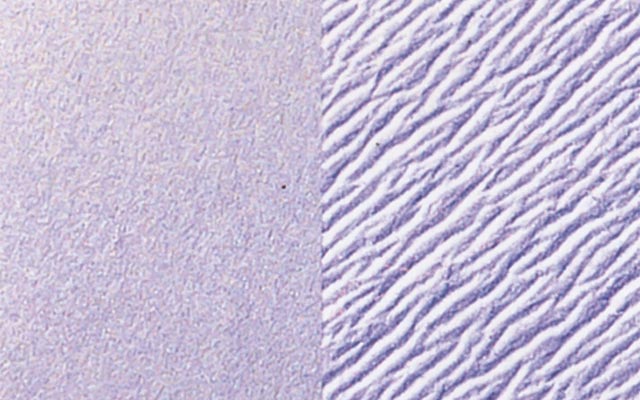
|
|
Left: Hoshoshi paper. Right: Danshi paper.
|

| Kyokushi Paper |
In 1875, the Ministry of Finance invited paper makers from Echizen to produce for them paper that was to be the most durable and the most suited for printing in the world, for use in Japan's banknotes. This new type of paper was called kyokushi paper.
The development of kyokushi paper brought with it the modernization of Echizen paper-making. Kyokushi paper was exhibited at the 1878 Exposition Universelle in Paris, where its beauty and strength both garnered praise. It also proved popular for use in printing securities and bonds, and in 1919 it was used for the official printing of the Treaty of Versailles.
|
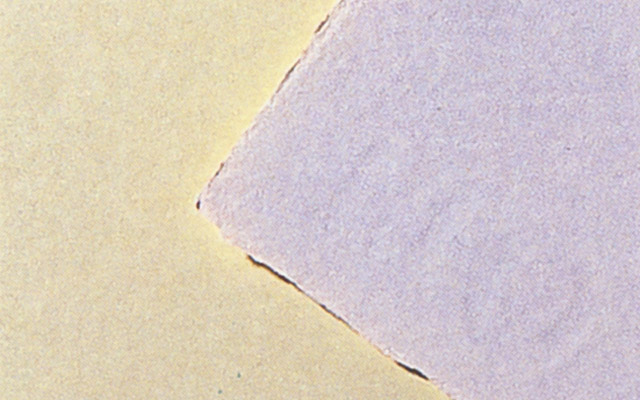
|

| Bijutsu-Koma-Gami Paper |
|
This type of paper is a representative example of Echizen's distinctive ability to produce paper with various patterns in the paper itself. Various methods of making paper have been developed for various intended uses for the paper. The flexibility of Echizen washi paper is said to be what made it possible to meet the demand.
|
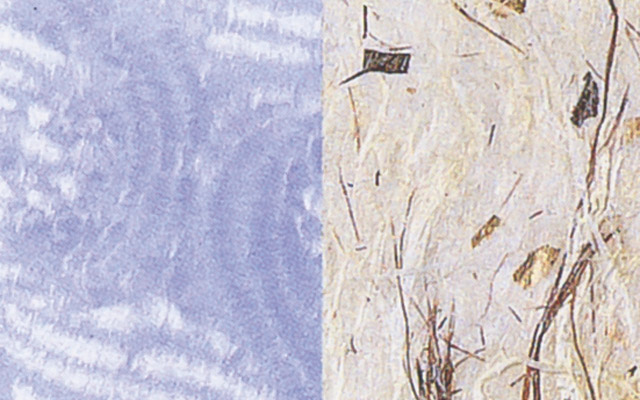
|

| Mashi Paper (Hemp Paper) |
Mashi paper, made from hemp and paper mulberry fibers and introduced from China, is said to have vanished in the mid Heian era (about 800–1,200 years ago). The first generation Iwano Heizaburo, the “saint of Echizen paper,” researched this type of paper in the mid 1920s and revived it as a type of paper meant for nihonga Japanese paintings.
Modern nihonga painters, beginning with the masters, have expressed their enthusiasm for mashi paper, and many have began using it in place of the older paper or silk that was previously used.
The mural Meian (Light and Darkness) at Waseda University was painted by the master Yokoyama Taikan on a square piece of mashi paper 5.4 meters (17' 9") on each side, called the okataishi paper. At the time, this was the world’s largest single piece of paper, drawing attention from worldwide.
The modern nihonga Japanese painting master Hirayama Ikuo is particularly fond of kumohada mashi paper (“cloud-skin” hemp paper) and shiro mashi paper (white hemp paper).
|

| Tori-no-Koshi Paper |
Once known as hishi paper during the Heian era (about 800–1,200 years ago), this type of paper changed along with the times, in the way it was used and its quality.
Its smooth texture and color were reminiscent of a chicken's egg, giving it the name tori-no-ko, or "baby bird." Its resistance to insect damage helped make it a long-lasting paper as well.
Echizen's tori-no-koshi paper is employed for exceptional uses throughout Japan, making it the perfect representative of Echizen washi paper. This particularly high quality washi paper is also highly suited to modern printing techniques.
|

|

| Kakoshi Paper (Processed Paper) |
"Kakoshi paper" is a blanket term that refers to washi paper that has been processed ("kako"). This processing can be done with goals ranging from making paper more beautiful, strengthening it, making it easier to write or draw on it, or making it better for printing.
In Echizen, new processing techniques are constantly being developed to meet modern needs, expanding the uses of Echizen washi paper and increasing its potential.
|

| Shogayoshi Paper (The Paper for Writing and Painting) |
Long ago, mashi hemp paper was the norm for writing and painting ("writing and painting" being the "shoga" in its name), but as written and painted expression changed over time, paper quality changed alongside them, expanding across an incredible variety of uses.
Echizen's paper makers responded one by one to writers' and artists' requests, improving their skills and the quality of this paper, culminating in the striking revival of ancient mashi hemp paper by the living national treasure, Iwano Heizaburo, and the locus of interactions with nihonga painters like Yokoyama Taikan.
|

| Usuyoshi Paper (Thin Paper / Gampi Transparent Paper) |
Documents of the Shosoin Treasure Repository were written on thin Echizen usugami and Tsukushi usugami paper, but starting in the Heian era (about 800–1,200 years ago), thin paper made from the gampi shrub came to have the name usuyo, and was widely used by women of the era.
Echizen's washi paper is renowned for its value in restoring and preserving historically valuable writings and paintings, through makers' ability to match the quality of materials, size, thickness, color, feel, and other characteristics of many types of paper.
|

| The Great Heisei Paper: The World's Largest Hand-Made Piece of Washi Paper |
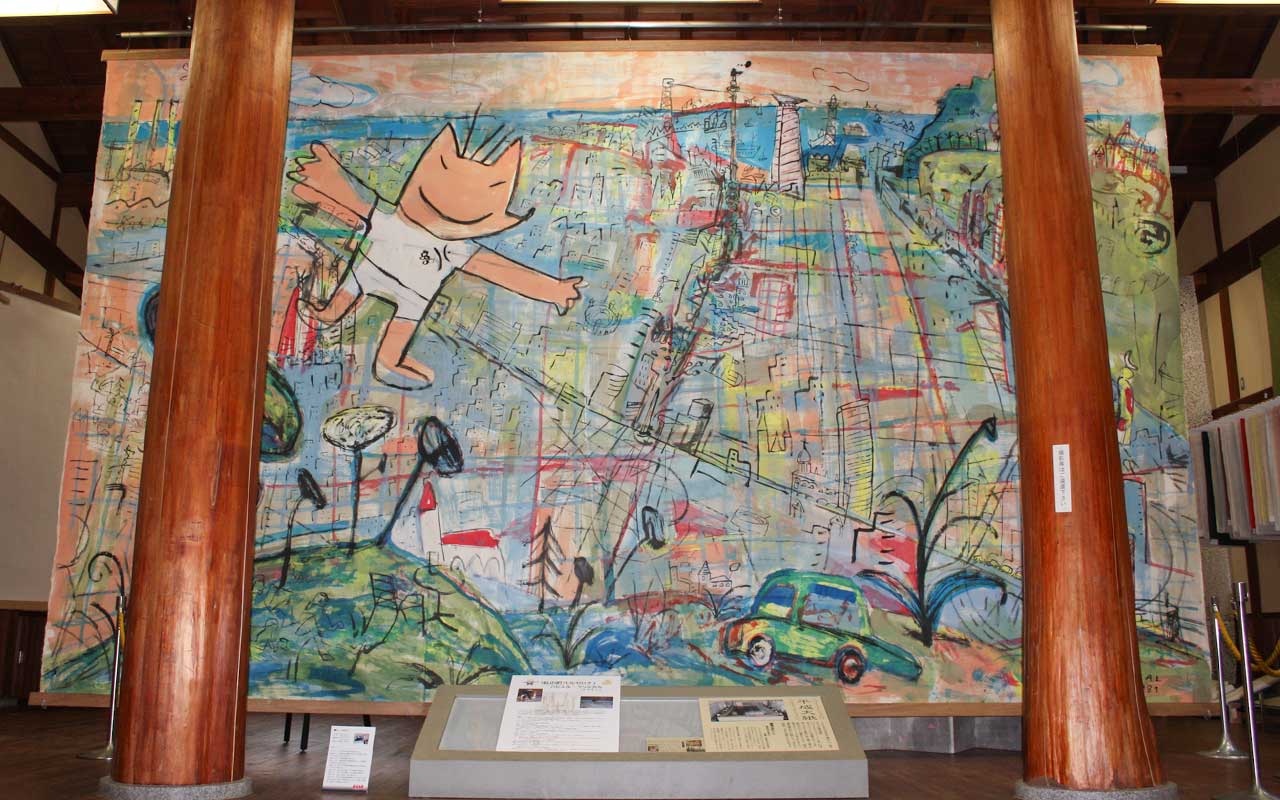
|
Made in 1989, the first year of the Heisei era, this holds the Guinness World Record for the world's largest piece of hand-made washi paper, measuring 7.1×4.3 meters (23' 4"×14' 1") and weighing 8.1 kilograms (17.9 lbs.).
The paper was made of paper mulberry and made in the nagashi-suki style. The paper-making frame took six months to produce, with the paper itself then made in twenty pieces over the course of three months.
This tremendous work demonstrates the techniques developed through Echizen washi paper's many centuries of tradition.
|
About this work: "My City, Barcelona"
Artist: Javier Mariscal
This is one of the seven pieces drawn on the Great Heisei Paper for the IMADATE Exhibition, held in 1989 in the former Imadate town. It is a fusion of Japanese materials, the capacities of Echizen washi paper, and the passion of Spain.
|
About Javier Mariscal (Born in Spain, 1950– )
Creator of the mascot characters for the Barcelona Olympics and the Hannover Expo 2000 and sculpture designer for the Spain hall of the 2005 World Exposition, Aichi, Japan. Industrial designer and artist across many fields around the world, including hotels worldwide, furniture design, interior design, painting and sculpture, and children's picture books.
|

| Floor Map |
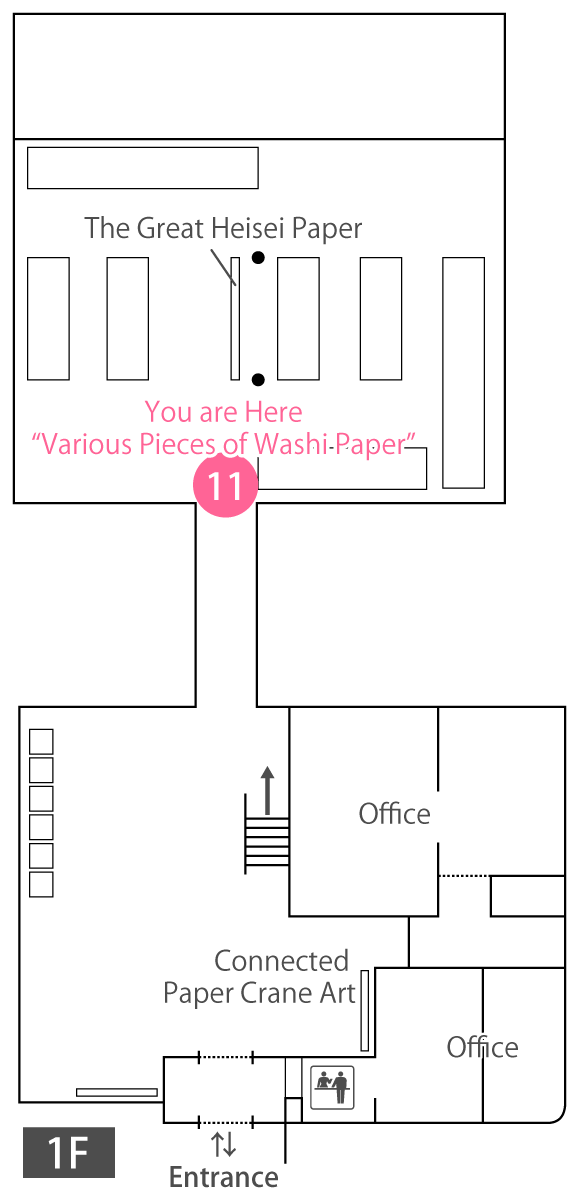
|
|

